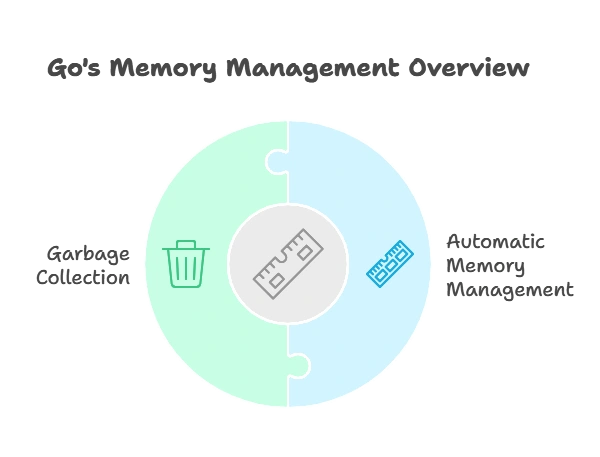Memory Leaks and Avoidance
Memory leaks occur when a program fails to release memory that is no longer needed, leading to excessive memory consumption and degraded performance. In this chapter, we'll delve into the concept of memory leaks in Go, exploring their causes, detection, and most importantly, how to avoid them through best practices and effective memory management techniques.
Understanding Memory Management in Go
Automatic Memory Management
Go uses automatic memory management, primarily through garbage collection, to handle memory allocation and deallocation. Understanding how Go manages memory automatically is crucial for identifying and preventing memory leaks.
Garbage Collection in Go
Go’s garbage collector (GC) periodically scans memory to identify and reclaim unused memory, preventing memory leaks. We’ll explore how the garbage collector works and its impact on memory management in Go programs.

Causes of Memory Leaks in Go
Unintentional Retention of Objects
Memory leaks often occur due to unintentional retention of objects, where references to objects are kept longer than necessary. We’ll discuss common scenarios that lead to unintentional retention and how to avoid them.
Cyclic References
Cyclic references, where objects reference each other in a loop, can prevent the garbage collector from reclaiming memory, leading to memory leaks. We’ll examine how cyclic references occur and strategies for breaking these cycles.
type Node struct {
value int
next *Node
}
func main() {
var a, b Node
a.next = &b
b.next = &a // Creates a cyclic reference
// Break the cycle to avoid memory leak: b.next = nil
}
- This code snippet creates a cyclic reference between two nodes (
aandb) in a linked list, potentially causing a memory leak. - Breaking the cycle by setting
b.nexttonilprevents the memory leak
Detecting Memory Leaks
Using Profiling Tools
Profiling tools like pprof can help detect memory leaks by analyzing memory usage patterns and identifying abnormal memory growth over time. We’ll explore how to use profiling tools effectively to detect memory leaks in Go programs.
Manual Inspection and Testing
Manual inspection and testing of code can also uncover memory leaks, especially when dealing with complex data structures and concurrency. We’ll discuss techniques for manual inspection and testing to detect memory leaks.
Best Practices for Avoiding Memory Leaks
Proper Resource Cleanup
Ensure timely release of resources such as file handles, network connections, and database connections to prevent resource leaks that may indirectly lead to memory leaks.
Effective Error Handling
Handle errors gracefully to prevent resource leaks and unintended memory retention, especially when dealing with deferred function calls and resource cleanup.
func readFile(filename string) ([]byte, error) {
file, err := os.Open(filename)
if err != nil {
return nil, err
}
defer file.Close() // Ensure file is closed to prevent resource leak
return ioutil.ReadAll(file)
}
This function reads the contents of a file and ensures that the file is closed regardless of whether an error occurs or not, preventing a resource leak.
Advanced Memory Management Techniques
Using Buffers and Pools
Reuse memory buffers and pools to minimize memory allocations and deallocations, reducing the risk of memory leaks, especially in performance-critical applications.
Context-Aware Memory Management
Implement context-aware memory management strategies to track and manage memory usage within specific contexts or operations, preventing memory leaks and improving resource utilization.
Memory leaks can have significant implications for the performance and reliability of Go applications. By understanding the causes of memory leaks, employing effective detection techniques, and adhering to best practices for memory management, developers can mitigate the risk of memory leaks and build more robust and efficient Go applications. Happy coding !❤️
Table of Contents

